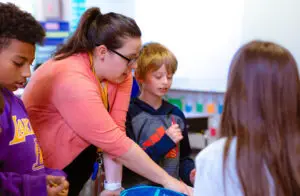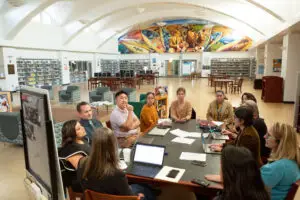WORKFORCE
INNOVATION
RETHINKING THE TEACHING PROFESSION
The pandemic exposed and amplified longstanding challenges within the teaching profession. School districts nationwide continue to struggle with recruitment and retention of effective educators and with diversifying their teaching staff.
Such big challenges call for big changes. School systems are beginning to reimagine their hiring processes, how they design the job, and how they support recruitment and retention. Some are removing barriers so that a broader range of individuals can staff or support classes, while other school systems are redesigning the role of the educator from an individual contributor to a member of a collaborative teaching team where responsibilities are shared across a larger roster of students.
We are systematically mapping and categorizing these and other strategies that school systems are adopting through a database of systems that we’ve surveyed. We encourage you to explore the database, which can be downloaded and filtered. This page also includes our topline findings and methodology behind the project, as well as reports we’ve produced on this and related topics.
QUICK LINKS
|
|
reports
Our current reports on teacher workforce innovation.
database
This database includes 28 school systems that are working to transform teaching into a more desirable and sustainable profession. Click the button below to download and filter the database.
Our team is currently working on providing additional data manipulations and visualizations, so keep an eye on this page for updates.
about the database PROJECT
As part of our project to map the landscape of what school systems are doing to address various challenges with hiring and retaining teachers, we created this database to identify and share information about school systems that are working to transform teaching into a more desirable and sustainable profession.
¹ We invited 74 education leaders, journalists, and practitioners who have expertise in the field of district and charter public school innovation. Leaders were invited to nominate school systems that they knew were planning, piloting, or implementing strategies to reimagine the teacher workforce.
² We identified these eight core strategies through media and literature reviews, as well as conversations with over a dozen organizations, including ASU MLFTC Next Education Workforce, ERS, Opportunity Culture, Leading Educators, TeachPlus, Transcend, Teach for America, EdFirst, Learning Accelerator, New America, Empower Schools, Innovate.edu, Educators 4 Excellence, Empowered Schools, BEST NC, and Charter School Growth Fund.
Currently, there are 28 school systems in the database. The systems represent a range of local and regulatory contexts, but most are traditional, urban, mid-sized districts (see Figures 1-3). We hope to grow the size of the database through a second round of data collection in fall 2023.
Figure 1: Types of systems in the Reimagining the Educator Workforce Database.
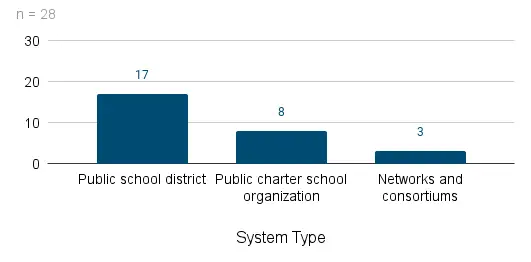
Figure 2: Urbanicity of systems in the Reimagining the Educator Workforce Database.
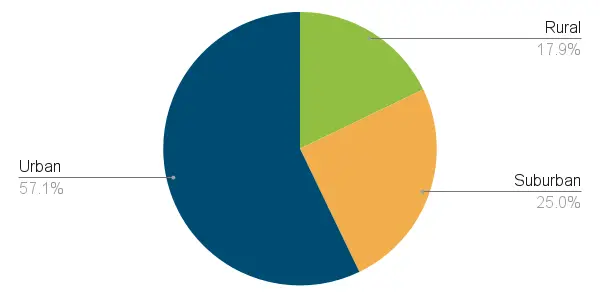
Figure 3: Number of students enrolled in SY 2021-22 in the Reimagining the Educator Workforce Database
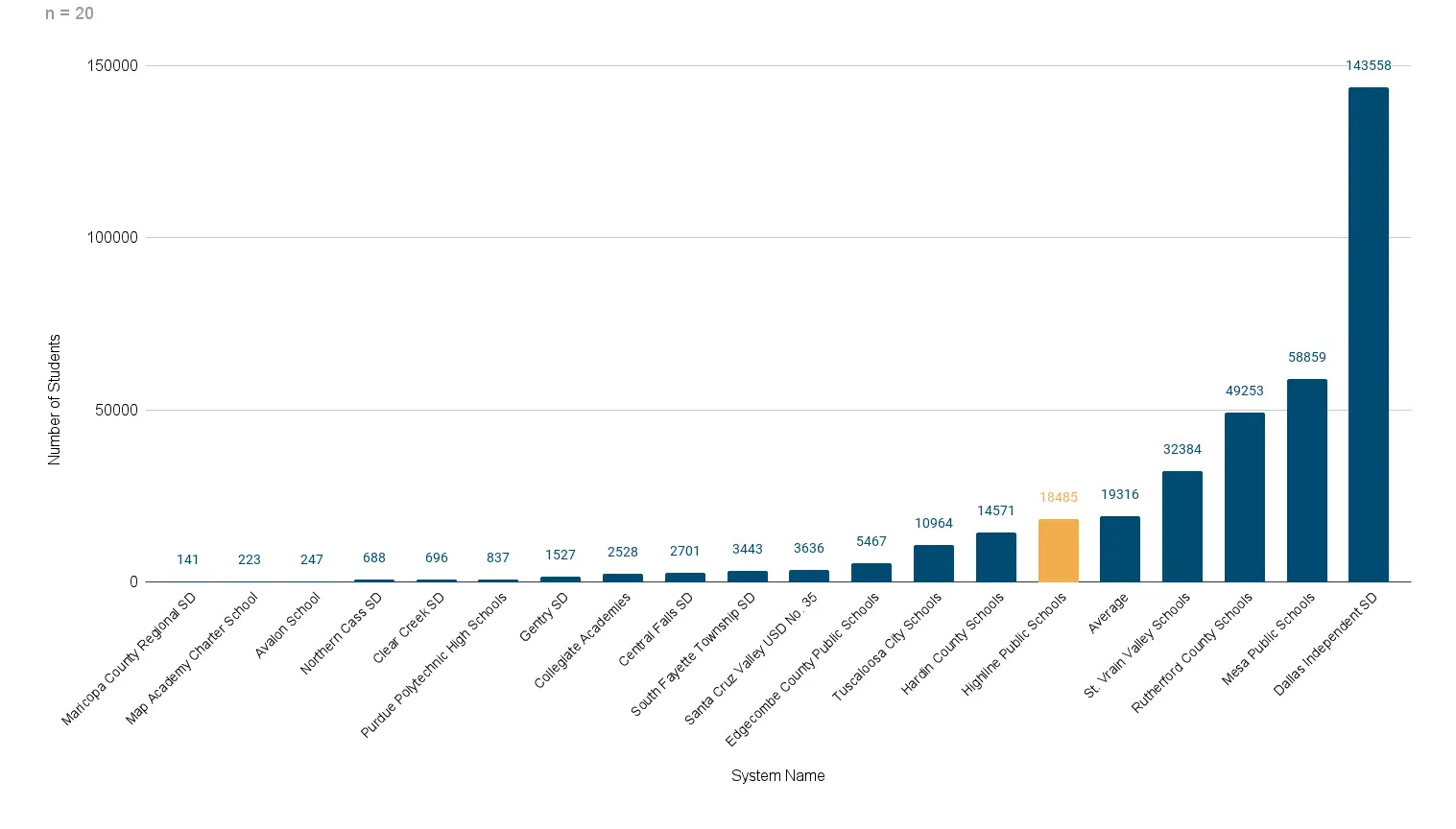
Half of the school systems are in right to work states—where teachers are not compelled to join a union as a condition of employment–and half are not (see column E in the database). Figure 4 shows the race and ethnicity of the systems’ leadership and staff. Generally, the school systems’ teachers are predominantly white, with a significant minority of leaders and teachers of color.
Figure 4: Diversity of teaching staff in the Reimagining the Educator Workforce Database
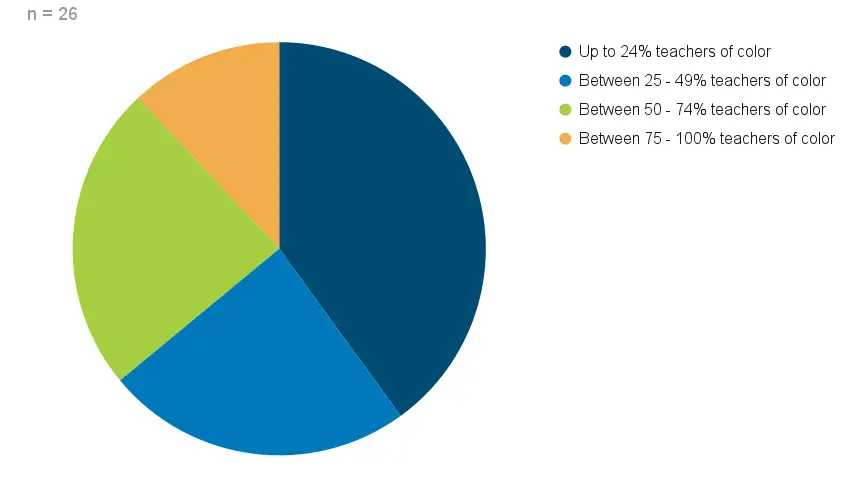
workforce strategies
We asked school systems to identify which of these eight core strategies they were planning, piloting, or implementing to address workforce challenges. School systems could identify more than one strategy.
Table 1: Top workforce strategies
| Category | Reimagined strategies |
|---|---|
| Redesigned schedules and workload | School system allows all or a subset of schools to flex time/ scheduling/ responsibilities. |
| Redefined educator requirements | School system removes barriers so that a broader range of individuals can staff or support classes. |
| Collaborative teaching | School system redesigns the role of the educator from individual contributor to member of a collaborative teaching team with teachers/ paraprofessionals/ resident and specialized teachers dividing responsibilities across a larger roster of students. |
| Intentional teacher recruitment program | School system intentionally recruits a broad range of teachers and other educator candidates (e.g. candidates of color or bilingual candidates) and/or trains educators in new ways of teaching. |
| New teacher leadership roles | School system provides system-wide educator leadership opportunities that allow teachers to grow in their careers without leaving instruction. |
| Differentiated and personalized development for teachers and other educators | School system provides system-wide differentiated teacher and educator development opportunities and programs that support leadership development and teachers’ daily work and personal growth. |
| Investment in staff well-being | School system intentionally supports school leadership and staff to lead strategies that support staff well-being/ inclusivity/ autonomy. |
| Compensation strategies | School system offers more money to current and new staff in alignment with additional responsibilities or performance that help achieve organizational goals. |
As Figure 5 shows, “Intentional Pipeline”was the most common strategy named, with 20 school systems identifying it as a strategy in place. This echoes our findings from an earlier brief that examines the workforce strategies of 100 large and urban school systems. 16 school systems also report using “New Educator Leadership Roles.” This is a newer strategy, as roughly half of the systems report that they are in the planning or piloting stages.
Figure 5: Phases of workforce strategy implementation in the Reimagining the Educator Workforce Database
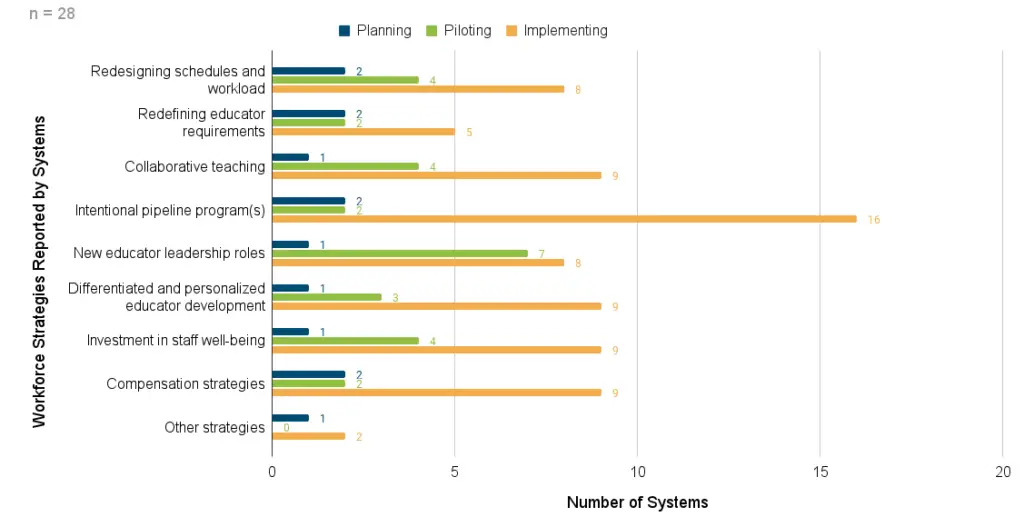
stacking workforce strategies
Employing more than one strategy to address teacher workforce challenges, or “stacking,” was also common: twenty-three systems reported planning, piloting, or implementing more than one strategy, 4.1 strategies on average.³ Compensation strategies are most commonly combined with other strategies. In these twenty-three systems, the most common pairs are⁴:
- intentional pipeline + new educator roles: 12 school systems
- intentional pipeline + staff well-being: 11 school systems
- compensation + staff well-being: 11 school systems
- compensation + collaborative teaching: 11 school systems
- compensation + new educator roles: 11 school systems
Figure 6: Most common pairs of strategies that school systems report “stacking” in the Reimagining the Educator Workforce Database
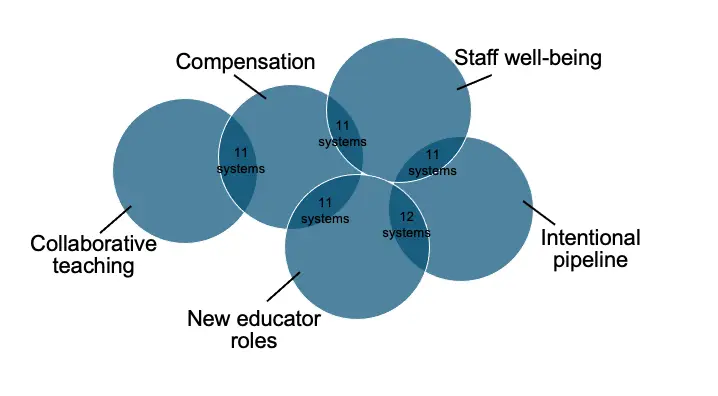
³ Five systems reported implementing only one strategy. Three of these systems reported implementing intentional pipeline programs, one reported implementing collaborative teaching, and the final system reported implementing differentiated and personalized educator development.
⁴ We identified the most common pairs of strategies by calculating how many systems reported planning, piloting, or implementing all possible combinations of strategies, and report the five most common combinations. For example, twelve systems reported using both intentional pipeline programs and new educator roles
ADDRESSING CHALLENGES
We asked school systems which challenges they wanted to address with their strategies. Nearly all systems reported trying to address recruitment-related problems, such as filling positions or finding higher quality teachers; nearly half of the systems reported wanted to address retention-related problems (see Figure 7). Most, but not all, school systems reported that the strategies they implemented were “very effective” or “extremely effective” in addressing their workforce challenges (see Figure 8).
Figure 7: Challenges that systems aimed to address with workforce strategies

Figure 8: How well systems think their strategies addressed challenges
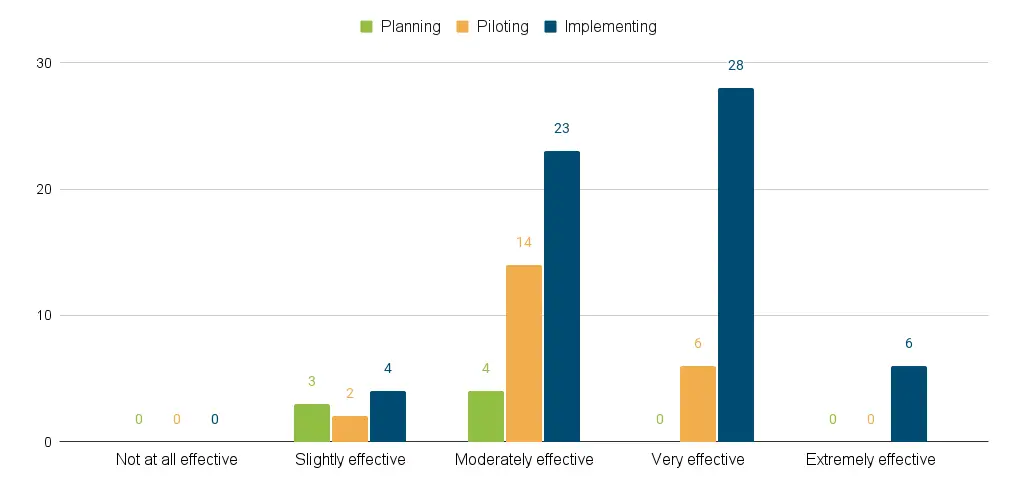
- Growing the size of the database through a second administration in Winter 2024.
- Gathering more details on how the systems are designing and adapting each of the eight core strategies.
- Tracking how the most commonly-reported strategies change over time, and if/how other strategies become more common.
- Delving deeper into how school systems select strategies, as well as investigating how and why school systems stack multiple strategies.
- Examining whether school systems find specific strategies to be more or less effective in resolving different problems.
In Fall 2023, two more reports on this project will be released. The first report will examine what it’s like to be a teacher working in a redesigned school system. The second report will be an analysis of how school leaders view their work in leading workforce redesign efforts, as well as how they overcome various barriers while doing so.
OTHER WORK
Other reports and publications related to our research in workforce innovation.
Breaking the “Egg-Crate” Model of Schooling
This article was originally published by ASCD. Team-teaching models provide...
Read MoreEarly evidence of improved educator outcomes in Next Education Workforce models
Concerns about the teacher workforce are rising, with fewer teachers...
Read MoreInterconnected problems, interconnected strategies: Using “strategy braiding” to address teacher workforce challenges
This blog is part of a three-part series on school...
Read MoreCrossing the chasm: How one district is moving its innovative staffing model from pilot to mainstream
This blog is part of our series profiling three school...
Read MoreBreaking the teaching mold—with help from the teachers union
This blog is part of a three-part series profiling school...
Read MoreThe rise of unconventional teaching roles: How do educators in these roles feel about them?
Many are talking about ways to rethink the role of...
Read MoreContributors
We wish to extend special thanks to the Joyce Foundation for supporting this project.




